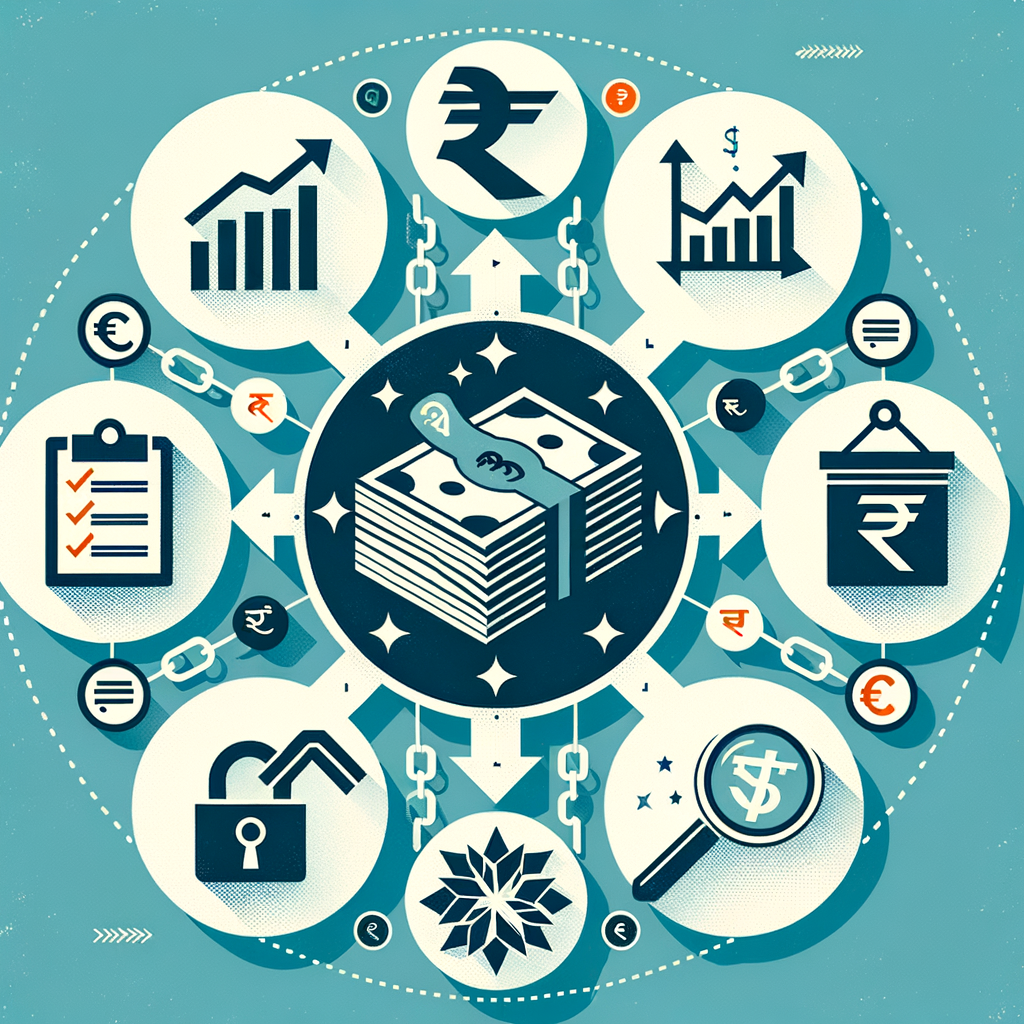Building an Emergency Fund While Managing Debt in India: A Practical Guide
A sudden medical bill arrives after a family member falls ill. The roof starts leaking during the monsoon season. An essential piece of business equipment breaks down, halting your operations. For many Indians, these are not hypothetical scenarios but real-life financial shocks that can derail even the most carefully laid plans. The constant struggle between paying off existing loans and saving for these unknowns creates a stressful cycle. But what if the solution wasn’t about choosing one over the other? The key lies in building an emergency fund while you simultaneously tackle your liabilities. This fund isn’t a luxury you can afford only when you’re debt-free; it’s a critical financial safety net that protects you from taking on more high-interest debt when a crisis strikes. This guide will provide a practical roadmap for managing debt India while securing your financial future.
What is an Emergency Fund and Why is it Non-Negotiable?
Before diving into the “how,” it’s crucial to understand the “why.” An emergency fund is the bedrock of financial stability, and understanding how important is it to have an emergency fund in personal financial planning? is the first step. It acts as a personal insurance policy against life’s unexpected turns, providing you with the resources to handle a crisis without compromising your long-term goals or sinking deeper into debt. Without this buffer, a single unexpected event can force you to liquidate investments prematurely, swipe a high-interest credit card, or take out a costly personal loan, setting your financial progress back by years.
Defining Your Financial Safety Net
An emergency fund is a stash of money set aside in a separate, highly liquid (easily accessible) savings account. Its sole purpose is to cover unforeseen and absolutely essential expenses. Think of it as your financial first-aid kit.
What it’s for:
- Loss of a job or primary income source
- Unexpected medical or dental emergencies
- Urgent and necessary home repairs (like a broken geyser or major plumbing issue)
- Critical car repairs needed for your commute
- Emergency travel for family matters
It is crucial to distinguish this from other savings goals. This money is NOT for planned expenses like a down payment on a house, a family vacation, a wedding, or for investing in the stock market. The primary goal of this fund is safety and accessibility, not high returns.
How Much Do You Need? A Guideline for Indians
The ideal size of your emergency fund depends on your financial situation, income stability, and dependents. Here are some tailored guidelines for how to build emergency fund in India:
- For Salaried Individuals: With a relatively stable monthly income, the standard recommendation is to save 3 to 6 months’ worth of essential living expenses. This includes your rent or home loan EMI, utility bills, groceries, transportation costs, insurance premiums, and other non-negotiable monthly outgoings.
- For Small Business Owners & Freelancers: Due to fluctuating income and additional business risks, a larger cushion is necessary. Aim for 6 to 12 months’ worth of essential personal *and* critical business operating expenses. This should cover your family’s living costs plus unavoidable business expenses like office rent, employee salaries, and essential vendor payments. This robust fund ensures both your family and your business can weather a slow period without taking on damaging debt.
A Step-by-Step Strategy: Building an Emergency Fund While Managing Debt
Tackling debt and savings at the same time might seem like fighting a battle on two fronts, but a structured approach can make it manageable and highly effective. This hybrid strategy ensures you are making progress on your past liabilities while protecting your future.
Step 1: Get a Clear Picture of Your Finances
You cannot plan a journey without knowing your starting point. The first step is to conduct a thorough financial audit. This will give you the clarity needed to make informed decisions.
- Map Your Cash Flow: For one full month, track every single rupee. Create a simple spreadsheet or use a budgeting app to list all your sources of income and categorize every expense. This exercise often reveals surprising spending habits and identifies areas where you can cut back by applying Effective Budgeting Techniques to Reduce and Eliminate Debt.
- Create a Debt Inventory: List all your debts in one place. This isn’t just about the total amount you owe; you need details. For each loan (credit card, personal, auto, business), note down the outstanding principal, the interest rate (APR), and the minimum monthly payment (EMI).
| Debt Type | Outstanding Amount (₹) | Interest Rate (% p.a.) | Minimum Monthly Payment (EMI) (₹) |
|---|---|---|---|
| Credit Card 1 | ₹50,000 | 36% | ₹2,500 |
| Personal Loan | ₹2,00,000 | 14% | ₹5,500 |
| Car Loan | ₹3,50,000 | 9% | ₹8,000 |
This inventory is critical for the next step: prioritization.
Step 2: Prioritize Your Debts with a Proven Method
Once you see all your debts laid out, you need a strategy to tackle them efficiently. There are two widely recognized debt management strategies India that work well, often compared as Debt Snowball vs. Debt Avalanche: Which Strategy Is Best for You?. Your choice depends on what motivates you more: mathematics or psychology.
- The Debt Avalanche Method: This method is mathematically optimal. You focus on paying off the debt with the highest interest rate first, while making only the minimum payments on all your other debts. In our example table, you would direct all extra funds towards the 36% credit card debt. Once that’s cleared, you’d move to the 14% personal loan. This approach saves you the most money in interest over the long run.
- The Debt Snowball Method: This method focuses on behavioral psychology and momentum. You prioritize paying off the debt with the smallest balance first, regardless of the interest rate. Once the smallest debt is paid off, you roll that payment amount into the next-smallest debt. The quick wins from clearing debts off your list can provide a powerful motivational boost to keep you going.
Neither method is universally “better.” The best one is the one you will stick with.
Step 3: Adopt the “Pay-and-Save” Hybrid Approach
This is where everything comes together. Instead of choosing between saving and debt repayment, you do both in a calculated way.
- Automate a Starter Fund: The very first thing you should do is start
building emergency fund. Set up an automated monthly transfer from your salary account to a separate, new savings account. It doesn’t have to be a large amount. Even ₹1,000, ₹2,000, or ₹5,000 a month is a fantastic start. The goal here is to build the habit and create a small initial buffer. Consistency is more important than the amount at this stage. - Cover All Minimums: Before you do anything else, ensure you are making the minimum required payments on all your debts listed in your inventory. Missing payments leads to penalties, late fees, and a negative impact on your CIBIL score, which you must avoid.
- Attack the Priority Debt: After you’ve automated your small savings transfer and covered all your minimum debt payments, any money left over from your budget should be aggressively directed towards your priority debt (the one with the highest interest rate for Avalanche, or the smallest balance for Snowball).
Smart Tips to Find Extra Money for Your Goals
Finding extra cash in a tight budget requires a bit of creativity and discipline. Here are some practical emergency fund tips in India tailored for different financial profiles.
For Salaried Professionals
- Audit Your Subscriptions: Take a hard look at your monthly bank statements. Are you paying for multiple OTT platforms (Netflix, Hotstar, Prime Video), gym memberships you don’t use, or app subscriptions you’ve forgotten about? Cancelling just a few of these can free up a surprising amount of cash.
- Leverage Windfalls Strategically: When you receive an annual bonus, a performance incentive, or a tax refund, resist the urge to spend it all. Commit to a plan beforehand, such as a 50/50 split: 50% goes directly towards your high-interest debt, and 50% goes into building your emergency fund.
- Practice the ‘One Day’ Rule: For any non-essential purchase over, say, ₹1,000, impose a mandatory 24-hour waiting period. This simple rule helps differentiate between a genuine need and an impulsive want, saving you from countless unnecessary expenses.
For Small Business Owners
- Review Business Overheads: Scrutinize every line item in your business expenses. Can you renegotiate your office rent? Are there more affordable software-as-a-service (SaaS) alternatives to what you’re currently using? Can you implement energy-saving measures to reduce utility bills? Every rupee saved in the business is a rupee you can allocate to your personal financial goals.
- Optimize Your Invoicing and Collections: A healthy cash flow is vital. Tighten your payment terms with clients, offer small discounts for early payment, and follow up diligently on overdue invoices. Improving your collection cycle frees up working capital that can be used to pay down debt or build your emergency savings.
- Focus on Tax-Saving Investments: Smart tax planning can significantly reduce your tax liability, leaving more money in your pocket. “Top Tax-Saving Investment Options in India like ELSS or PPF can reduce your tax liability, freeing up cash that can be rerouted to your emergency fund. Our experts at TaxRobo can help you with tax-efficient planning.” This is not just a saving, but an investment in your financial security.
Where Should You Keep Your Emergency Fund in India?
The location of your emergency fund is just as important as building it. The core principles are safety of the principal amount and liquidity (the ability to access it quickly without penalty). This is not the place to chase high returns.
The Best Options for Accessibility & Safety
- High-Yield Savings Account: This is the simplest and most recommended option. Open a separate savings account (not your primary salary account) with a bank that offers a decent interest rate. It’s safe, insured by the DICGC up to ₹5 lakh, and you can access the money instantly via a debit card, UPI, or net banking.
- Liquid Mutual Funds: These are a type of debt mutual fund that invests in short-term money market instruments. They generally offer slightly better returns than a savings account and are highly liquid (you can usually get your money in one business day). However, it’s important to remember they are not entirely risk-free and returns are not guaranteed.
- Bank Fixed Deposits (FDs) with a Sweep-in Facility: A traditional FD locks your money for a fixed term. However, many banks offer a “sweep-in” or “multi-option deposit” facility that links your savings account to an FD. This gives you the higher interest rate of an FD but allows you to withdraw money as needed from your savings account, with the bank automatically breaking a part of the FD to fund the withdrawal.
What to Avoid for Your Emergency Savings
- Stocks & Equity Mutual Funds: These are far too volatile for an emergency fund. The value can drop significantly right when you need the money the most.
- Your Primary Salary/Operating Account: Keeping your emergency fund in the same account you use for daily spending makes it too easy to dip into for non-emergencies. A separate account creates a crucial psychological barrier.
- Illiquid Assets: Avoid locking your emergency money in assets like Public Provident Fund (PPF), ELSS, real estate, or physical gold. These are difficult to convert to cash quickly and often come with penalties for premature withdrawal.
Conclusion: Secure Your Present to Build Your Future
The journey of building an emergency fund while paying down debt is a marathon, not a sprint. It’s a deliberate balancing act that shifts the focus from just clearing past financial obligations to proactively protecting your future. By creating this essential financial buffer, you break the vicious cycle where one unexpected expense leads to more high-interest debt. It’s about giving yourself financial breathing room and peace of mind.
Remember the core strategy: Assess your complete financial picture, Prioritize your debts using a method that works for you, and implement the Pay-and-Save hybrid approach. Every small, consistent step you take brings you closer to a future where you are in control of your finances, prepared for any challenge that comes your way.
Navigating finances can be complex. If you need help structuring your budget, planning your taxes, or developing debt management strategies India, TaxRobo’s team of financial experts is here to guide you. Contact us for a consultation today.
Frequently Asked Questions (FAQs)
Q1. Should I pause my SIPs for long-term goals like retirement while building an emergency fund?
A: It depends on your risk tolerance and debt situation. For high-interest debt (like credit card debt with an interest rate over 15-20%), many financial experts advise pausing long-term investments temporarily to aggressively pay it off. The guaranteed high return from paying off such debt often outweighs potential market gains. However, if your debt has a lower interest rate (like a home loan), it’s often better to continue your SIPs while following the “Pay-and-Save” hybrid approach, as your investment returns over the long term are likely to be higher than the interest on your loan.
Q2. What counts as a genuine emergency to use this fund?
A: A genuine emergency is an unexpected, necessary expense that would otherwise force you into debt or cause significant disruption to your life. Examples include: job loss (to cover living expenses), major medical bills not covered by insurance, urgent car repairs that prevent you from getting to work, critical home repairs that affect your safety (e.g., major electrical fault), or emergency travel for a family crisis. It is not for planned events, vacations, shopping sprees, or upgrading your phone.
Q3. I received a large bonus. Should I put it all into my emergency fund or pay off debt?
A: This is a great problem to have! A balanced approach is often best. First, ensure you have a starter emergency fund of at least one month’s essential expenses. If you don’t, use the bonus to achieve that goal immediately. After that, a 50/50 split is a popular and effective strategy: use half of the remaining bonus to make a lump-sum payment on your highest-interest debt, and put the other half into your emergency fund to get closer to your 3-6 month target.
Q4. How is building an emergency fund different for a small business owner in India?
A: The core principle of having a liquid safety net is the same, but the stakes and scale are different. The primary difference is the size and scope of the fund. Due to irregular income and the risk of business downturns, a business owner should aim for a much larger fund (6-12 months) that covers both personal living costs and non-negotiable business expenses (like rent, salaries, critical vendor payments). This dual-purpose fund acts as a buffer against slow sales months, preventing the owner from having to take on high-interest business loans or shut down operations during a temporary crisis.



